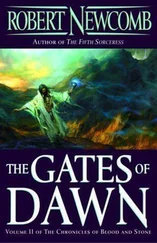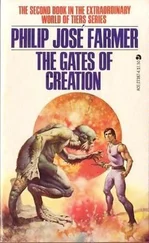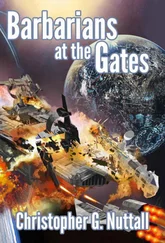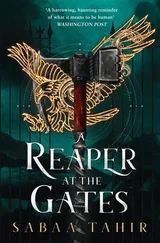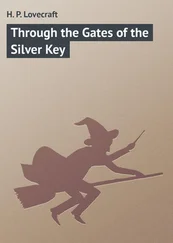For a moment, Lt. Horst Scheibert wondered whether he had stumbled on elements of the German 23rd Panzer Division that was providing support for 6th Division’s drive to the pocket. Everything looked so German, then he noticed that the gun barrels seemed more stubby, and the turrets had no domes.
Still hesitant and nervous, he moved his force closer. At six hundred meters, he had not made up his mind to shoot. He trembled as the distance closed rapidly.
Suddenly the soldiers ahead jumped for their own tanks and Scheibert only had time to scream, “ Achtung!” into the radio before two Russian tanks came at him.
Scheibert hollered again, “Fire! Russians!” But the enemy got off the first shots. At only three hundred meters, they missed completely.
German gunners were more acurate. The first two Russian tanks blew up violently, and “the rest was child’s play.” Reloading with tremendous speed, the Germans slamed shells through the confused enemy formation. Thirty-two curling black pillars of smoke marked the total destruction of one of the Soviet tank columns outside Verkhne-Kumski.
But other Russian armored groups still controlled the town. The Germans could not yet break through toward the Mishkova River.
While grenadiers of the 6th Panzer Division probed for a weak spot in the Russian defense, they heard and saw the Junker and Heinkel transports streaming through the sky toward Pitomnik Airfield as the Luftwaffe tried to sustain life in the Kessel. Paulus’s tirade against Martin Fiebig on December 11, had resulted in increasing the air shipments to Stalingrad by fifty tons a day. Still it was not nearly enough.
The fault could not be charged solely to the German pilots, whose varied problems defied solution. Russian fighters and antiaircraft were taking an ever greater toll of transports. But the most exasperating worry was the weather of southern Russia. A fulcrum for colliding maritime and continental fronts, it frustrated countless forecasts. Aircraft expecting good weather at Pitomnik frequently encountered low clouds, fog, or even blizzards that forced detours to bases hundreds of miles away. When that happened, both the cargos and planes were lost to the Stalingrad shuttle for several days at a time.
To counteract such failures, meteorologists tried to rely on eyewitness reports from observers inside the Kessel. But these men often failed to broadcast. There was no fuel to power the generators for their radios.
A more deadly foe was ice. It tore up engines and immobilized planes for weeks, forcing mechanics to cannibalize parts from wrecks to repair damaged motors. And the mechanics themselves had to overcome unexpected hazards. When they removed their gloves to make delicate adjustments on equipment, their fingers froze to the metal. Maintenance that should have been accomplished was left undone, with catastrophic results.
Human error led to another series of mishaps. Since the Luftwaffe refused to allow army quartermasters to supervise the loading of the transports going to Stalingrad, famished soldiers at Pitomnik frequently opened crates of utterly worthless goods. One day it was thousands of protective cellophane covers for hand grenades—but no hand grenades. Another time, it was four tons of marjoram and pepper—at a time when troops were killing mice and eating them. Again, several thousand right shoes. Most ironic of all was a shipment of millions of neatly packaged contraceptives.
While airmen braved death to carry such unusual supplies to the Kessel, the Germans in Stalingrad scrounged for protein.
Thirty-one-year-old Cpl. Heinz Neist met an officer, Lieutenant Till, who smiled mischievously and asked: “Want something to eat?”
Neist gratefully accepted the offer and sat down before an aluminum plate that was loaded with potatoes, meat and gravy. When he looked warily at the feast Till grinned: “Believe me, it is not a human being.” Neist needed no further urging and ate everything in front of him. The meat tasted just like veal and only when he finished, did he ask what it was. Till told him it was the last of the Doberman pinschers.
Neist could not have cared less. His stomach was full for the first time in weeks.
In his snowhole at the edge of no-man’s-land, Pvt. Ekkehart Brunnert could not imagine such a meal. His clothes had frozen to his body, but his worst complaint was about his stomach. It doubled him over with knifelike pains.
His main meal each day was a watery soup. More was out of the question, because whenever he held out his mess tin, his name was recorded to prevent him from getting a second helping. What really made him furious was the sight of sergeants eating from plates heaped with solid food. Afraid to speak out about the privileges of rank, the private began to wonder whether everyone in the pocket really depended on each other for survival.
Like thousands of others, he foraged for extra food where he could. Once, the head of a frozen horse provided brains for a delicious meal. Another time, a roll of medicine tablets helped assuage his hunger.
Given a break from front-line duty, he went to the rear to seek warmth and rest. Within hours, however, he faced an arms inspection. Never having been issued proper lubricants, Brunnert frantically scratched and rubbed his weapon with scissors, stones, even his fingernails, until most of the rust disappeared. But the senior corporal who inspected Brunnert’s platoon used a carefully sharpened match to pry into each rifle. Disgusted with the results, he promptly placed Brunnert and the others on extra guard duty. Walking his post that night, Brunnert had barely enough strength to stand. His legs felt like rubber, and he feared the extra workload would finish him.
Forty-five miles south of the Kessel, at the village of Verkhne-Kumski, the 6th Panzer Division was still unable to push through Russian opposition. The northern and eastern horizons were filled with Soviet T-34 tanks and antitank guns that poured a fountain of projectiles at the Germans.
It was like a gun duel on the ocean, but here the snowfields assumed a crazy pattern of tank treads and long black streaks left by exploding shells. In the inevitable confusion of vehicles firing and then moving quickly to new positions, Germans shot at Germans, Russians at Russians.
When T-34s entered the village, a frantic German officer radioed: “Request permission to abandon the village….” It was not granted. Another formation of panzers invaded the town from the west; by noon, almost all its ammunition was spent.
Colonel Hunersdorff appeared in the midst of his weary troops. Leaning out of his tank, he screamed: “You want to be my regiment? Is this what you call attack? I am ashamed of this day!”
He kept it up, hurling invective on all sides and his soldiers reacted with cold rage. Some openly questioned his right to tell them how to fight. But Hunersdorff’s motive was simply to galvanize his tankers. This he did. His tirade was followed almost immediately by another desperate call for help from the Germans inside Verkhne-Kumski. Hunersdorff gave the order to burst into the village “at maximum speed whatever the losses,” and five companies formed a column with the few tanks carrying armor-piercing shells leading the way.
Still furious at Hunersdorff, the panzer crews roared ahead spraying the fields on both sides with indiscriminate machine-gun fire. The unorthodox approach terrified the Russians, who jumped up and ran wildly across the plains. Inside their Mark IVs, the Germans assumed that the Russians thought they were insane.
Verkhne-Kumski fell easily this time, but within hours an “inexhaustible supply” of Russians counterattacked and Combat Group Hunersdorff had to retreat to the west. Out of ammunition, almost out of fuel, each tank carried a load of wounded that clung desperately to the turrets. The combat groups’ diary recounted in laconic fashion, “This day was connected with heavy losses.”
Читать дальше

